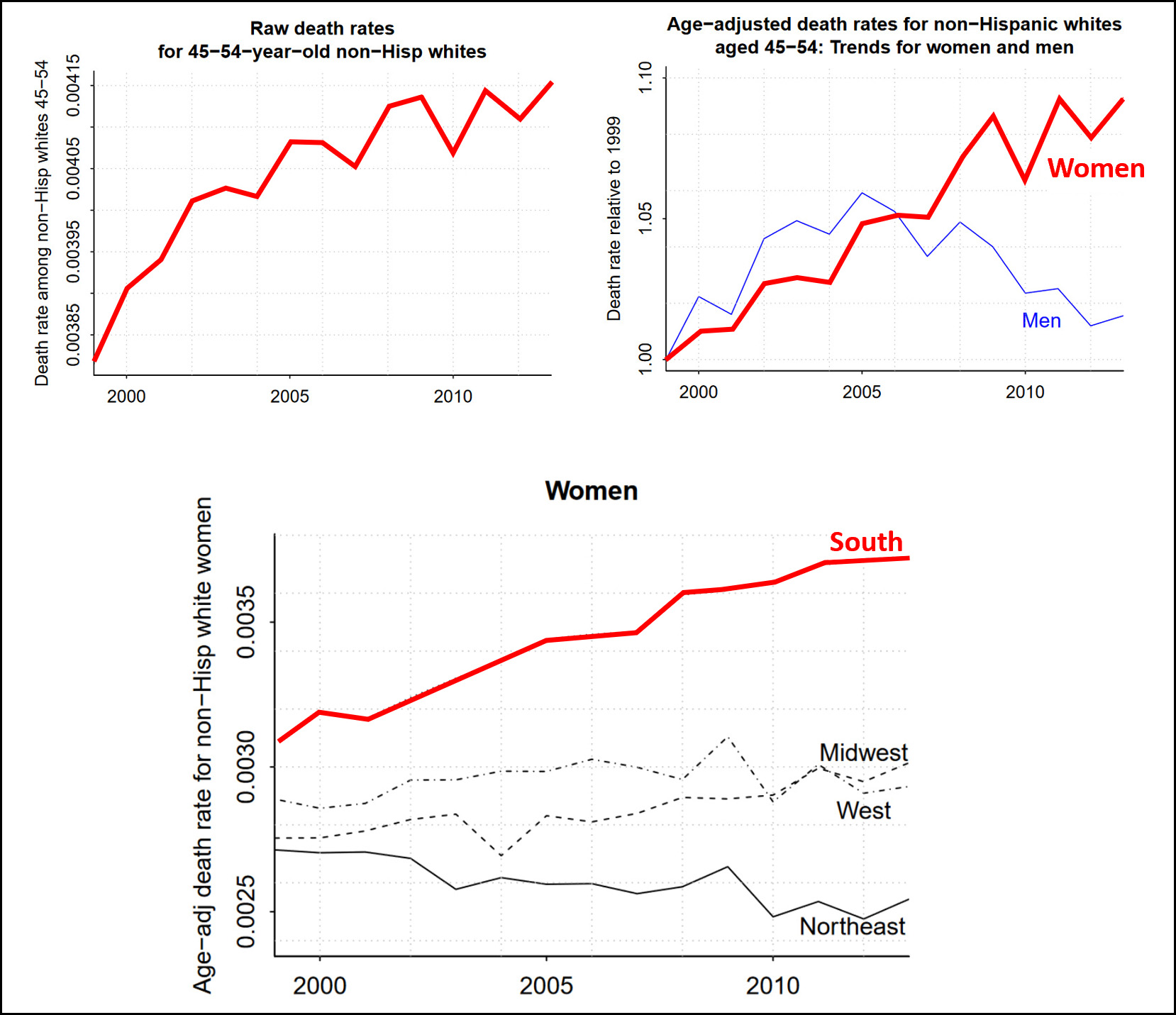There’s no special hook for this post. I was browsing around on Andrew Gelman’s blog and happened to come across these charts that he drew a couple of years ago. The subject is deaths of despair.
Anne Case and Angus Deaton famously found that the death rate of middle-aged whites had started to increase around the year 2000, and the media mostly reported this as a problem with middle-aged white men. Case and Deaton looked at causes of death and explained the increase as a sudden rise in “deaths of despair”: that is, a lot more deaths caused by suicide, drug overdoses, and alcohol problems.
But it turned out that Case and Deaton worked in age buckets (i.e., 25-35, 35-45, etc.) and hadn’t controlled for the fact that the average age within those buckets was steadily increasing. They also didn’t disaggregate by gender or region. When Gelman and Jonathan Auerbach did that, here’s what they found:

The upper left is the original chart for middle-aged whites. The next chart breaks it out by gender and finds that men suffered a brief bump around 2000, which turned around a few years laters and and ended up back where it started. Women, by contrast, saw their death rates steadily climb during the entire period.
Finally, looking only at women, there are no substantial increases in the Midwest, the West, or the Northeast. It’s all in the South, which had the highest death rate to begin with. Between 2000 and 2014, the death rate for middle-aged white women in the South went up from 0.31 percent to 0.37 percent.
It’s important to point out that the main problem reported by Case and Deaton remains powerful: even if most white Americans have experienced steady death rates (and life expectancies) since 2000, this compares poorly with the rest of the world, where life expectancies have continued to rise. There is obviously something bad going on that’s specific to the United States.
That said, the only group where death rates are literally rising are white women in the South. I’m mentioning this only because, to this day, I continue to see incorrect media references to this. If you’re comparing America to Europe, it’s fine to say that we’re performing worse across the board. But if you want to know where the biggest problem is, the answer is that it’s clearly focused on one specific group: middle-aged white women in the South.













